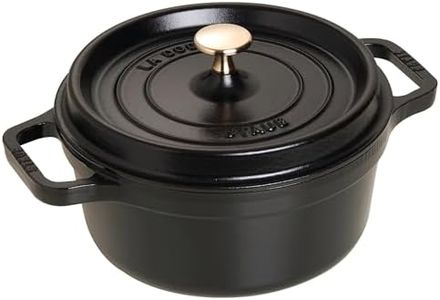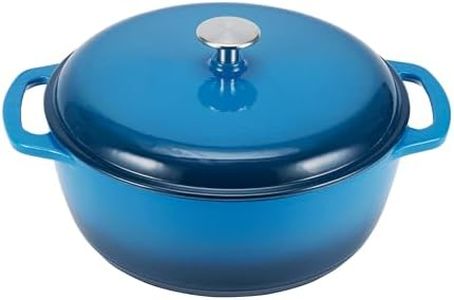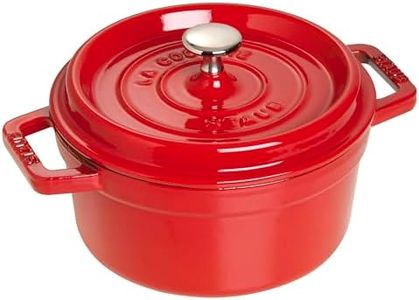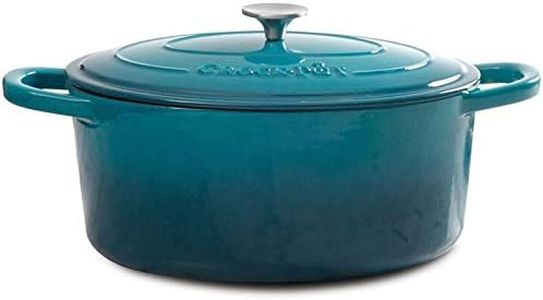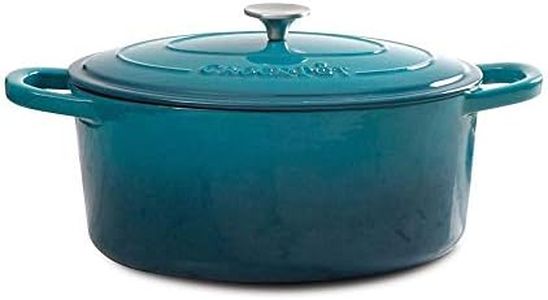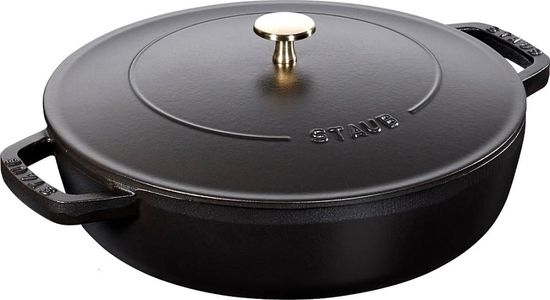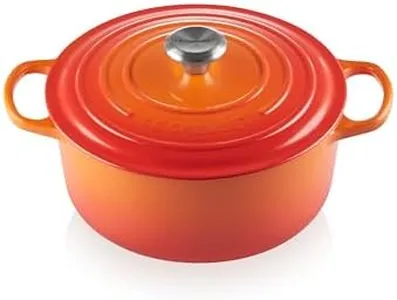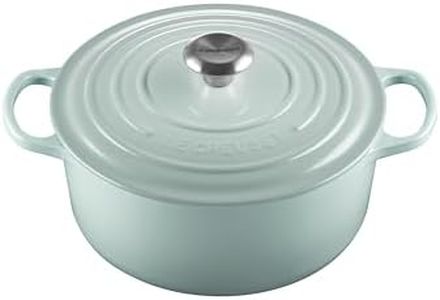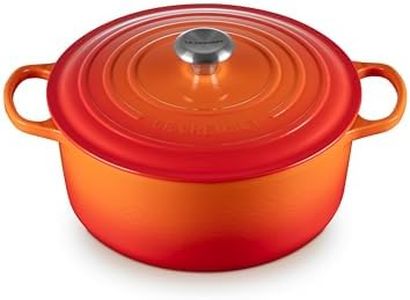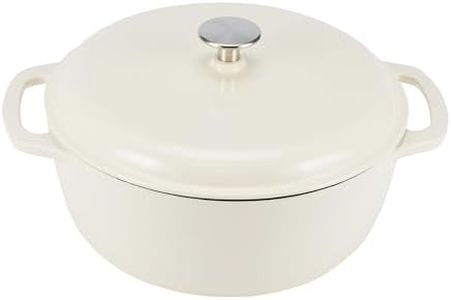We Use CookiesWe use cookies to enhance the security, performance,
functionality and for analytical and promotional activities. By continuing to browse this site you
are agreeing to our privacy policy
10 Best Dutch Ovens
From leading brands and best sellers available on the web.Buying Guide for the Best Dutch Ovens
When choosing a Dutch oven, it's important to understand how different features impact performance, durability, and convenience. Dutch ovens are versatile pots used for everything from stews to baking bread. Picking the right one depends a lot on your cooking style, typical recipes, and storage space. By focusing on a few key specifications, you can find a Dutch oven that makes cooking enjoyable and fits seamlessly into your kitchen routine.MaterialThe most common materials for Dutch ovens are cast iron and enameled cast iron. Cast iron offers excellent heat retention and durability, but it requires seasoning and careful maintenance to keep it from rusting. Enameled cast iron is coated to prevent rust and is easier to clean, but it can sometimes chip if not handled carefully. To pick the right material, think about your cooking habits and willingness to maintain the pot—choose bare cast iron if you enjoy traditional seasoning and don't mind upkeep, or go with enameled cast iron for low-maintenance convenience and easy cleanup.
Size/CapacityDutch ovens come in a range of sizes, most often measured in quarts or liters. Small ones (about 2-3 quarts) are great for side dishes or cooking for one or two people. Medium sizes (4-5 quarts) are the most versatile, fitting most recipes for families of four. Larger Dutch ovens (6 quarts or more) are best if you regularly cook for groups or want leftovers. To choose, consider your usual batch size—if you mostly cook for yourself, go smaller; if you love hosting, go bigger.
ShapeDutch ovens are typically round or oval. Round ovens fit well on standard stovetops and are great for making soups, stews, and bread. Oval ovens provide more space for larger cuts of meat, like roasts, and can fit better in an oven if you like braising big pieces. Select the shape based on both the kind of food you prepare most often and how you plan to use the Dutch oven—round is usually more versatile, while oval is specialized for large roasts or poultry.
WeightDutch ovens, especially those made of cast iron, can be quite heavy. Heavier models retain heat better for even cooking, but can be difficult to handle, especially when full. Lighter ones are easier to lift and clean, but might not hold temperature as well. Consider your comfort with lifting and transporting a heavy pot, especially when filled with hot food, and choose a weight that’s manageable for you.
Lid DesignA tight-fitting lid is crucial for keeping moisture and flavors in, which is a big part of what makes Dutch oven cooking unique. Some lids have bumps or ridges underneath to help continuously baste food as it cooks. When choosing, look for a lid that feels secure and snug—this helps with braising and slow-cooking. If you’re interested in self-basting designs, check the underside of the lid for those features.
Oven-Safe TemperatureThe maximum temperature a Dutch oven can safely handle is important if you plan to bake, broil, or use high-heat cooking. Some handles and knobs are only safe up to a certain temperature. Decide if you need a Dutch oven that can go from stovetop to a very hot oven—if so, check that all parts, especially the lid knob, are oven-safe to the temperature you typically use.
Ease of CleaningSome Dutch ovens have surfaces that are easier to clean than others. Enameled versions generally clean up easily with soap and water, while bare cast iron requires special care to avoid rusting and needs to be re-seasoned regularly. If dishwasher safety is important to you, check if the Dutch oven can be safely washed in a machine, though most last longer with hand-washing. Let your preference for cleaning and maintenance guide this choice.


